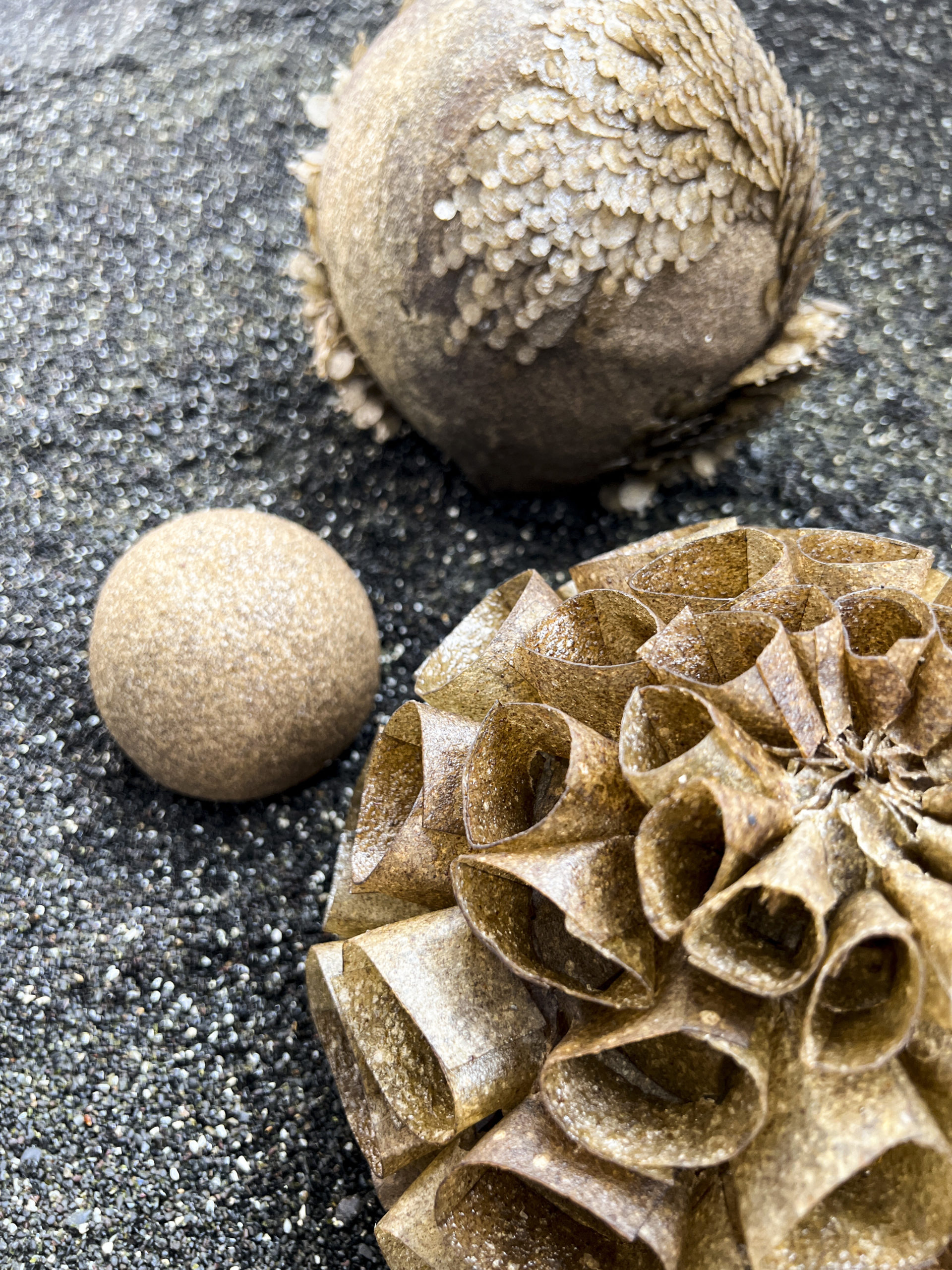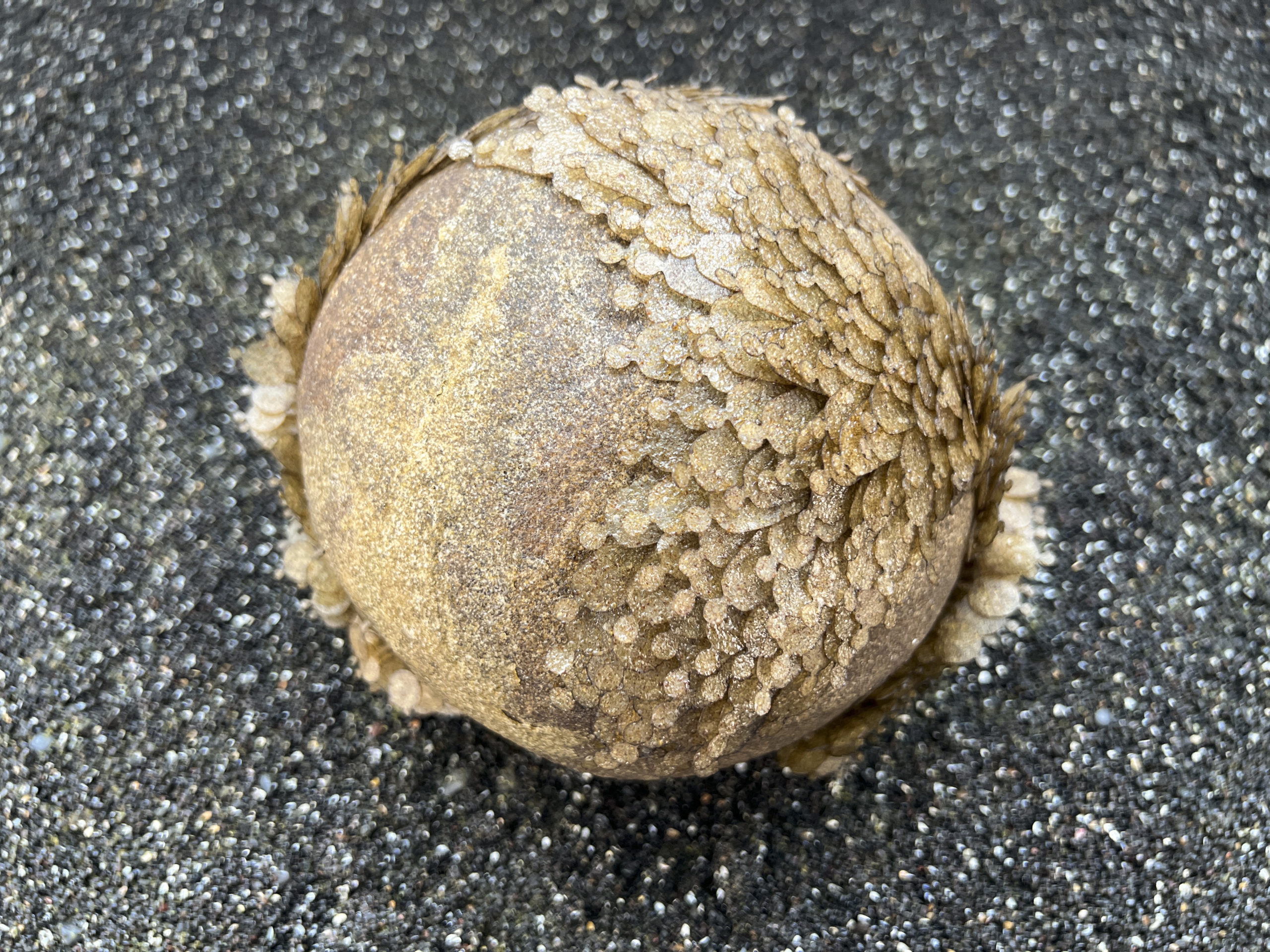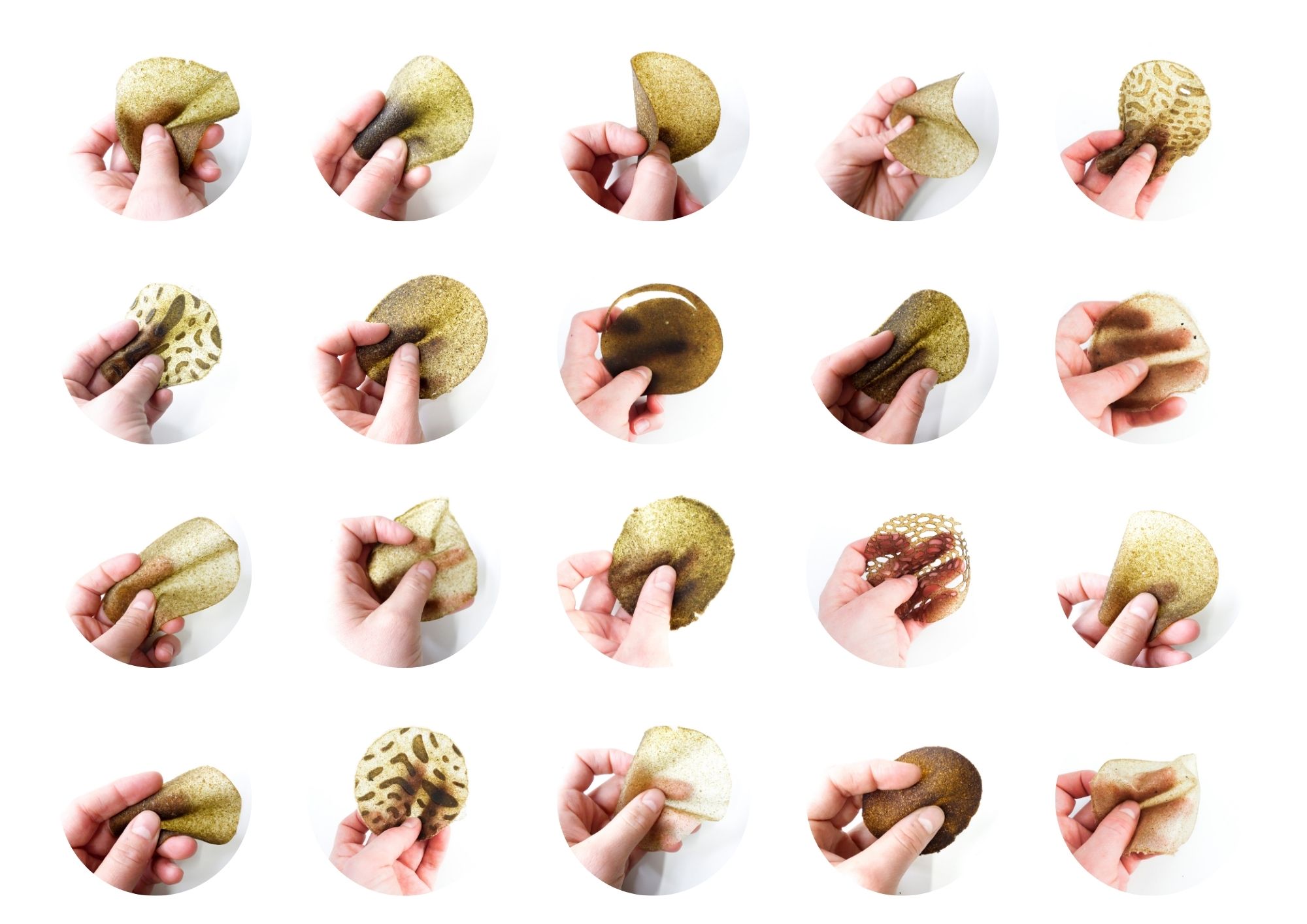Seaweed Dialogues | Alberte Bojesen

Useful information
- Team members
- Country
- —
- Keywords
- -
Detailed Description
Seaweed Dialogues is a material-driven research into Icelandic kelp as a material. The objective of is to initiate a sensorial dialogue between human and interactive seaweed vessels, posing the question of what seaweed is and can be.
Project Details
- Does your design take social and cultural challenges and human wellbeing into consideration?
The aim of this project was to utilise local Icelandic kelp, for the material research the local actors were approached, such as biologists, artists, kelp producers and harvesters, and activated to share their knowledge of the local kelp. This enabeled a much more holistic understanding of the kelp's ecosystem but also of the local culture and approach towards kelp. In turn the project proposed an alternative use of the material to their traditional and current use of it.
Later in the process local students were invited to try the kelp-material process, to educate the local community of the value of their surroundings and local resources.
- Does your design support sustainable production, embodying circular or regenerative design practices?
Using seaweed as a material is an attempt to work with a material that is regenerative through its growth, life and afterlife. The seaweed is a vital part of many marine ecosystems providing shelter and food, as well as producing around 50% of our planets oxygen. Using seaweed in its afterlife also opens up the possibilities to regenerate current unconscious processes in different sectors, such as chemicals, fuels, fodders, nutrition, and materials. The aim of this project is to educate and inform the broader public of the possibilities of kelp material and its role in a more sustainable future, through sensorial and haptic interactions with kelp objects and textures.
The processes to make the material aims to only use the kelp and add as little other material as possible. By understanding the chemical composition of the local kelp through the expertise of local biologist Gunnar Ólafsson, the double replacement reaction used for making sodium alginate gell could be employed by using the naturally occurring sodium alginate in the kelp. Resulting a much stronger material that remind of either leather or paper. The difference is that this material is created from kelp that has been washed up on the beach, using the waste of the sea that is left to decompose on the beach.
- Does your design use principles of distribution and open source?
The aim of the project is to lift the discussion and consideration of seaweed as a material. Hence a vital part of the project is its accessibility and distributability in various forms. The project, research and process is assembled in an open-source document accessable for all. The aesthetic choices of the seaweed vessels are derived through the use of parametric design and these files and definitions can also be downloaded online.
The concept of the project is to further the research of seaweed as a material, thus it is a vital part of the project to share recipes, methods and processes for others to build on.
- Does your design promote awareness of responsible design and consumption?
This project attempts to increase the focus and knowledge of how kelp can become an alternative and regenerative resource. In 2023 it is a well known fact that seaweed has become part of many theories of how to rebalance our ecosystems. However, it is not a material most people willingly or frequently interact with. Seaweed has in some ways become this abstract “saviour”, but how can we concretely and consciously use something we do not know, have not felt, smelled, or understood? Thus this project attempts to reconnect the human with seaweed through sensorial dialogues with seaweed vessels. In an attempt to inform and speculate on what seaweed is and can be socially, culturally and environmentally.
Algae provides an exciting alternative resource as it is one of the fastest-growing plants on earth, growing up to 60 cm a day. It is a fairly unexplored resource and collaborator "0.1 percent of the ocean could be dedicated to producing seaweed as a food source, materials, and chemicals. This would provide 15 times more seaweed than current production" (V. Doumeizel. and E. Giercksky, 2020.) The kelp's ecosystem is tightly entangled in our own, but we do not acknowledge it to a great extent. This project maps some of these entanglements and focuses on giving a comprehension of how we as designers can consciously and carefully employ kelp as a collaborator in designing alternative materials.
Images


